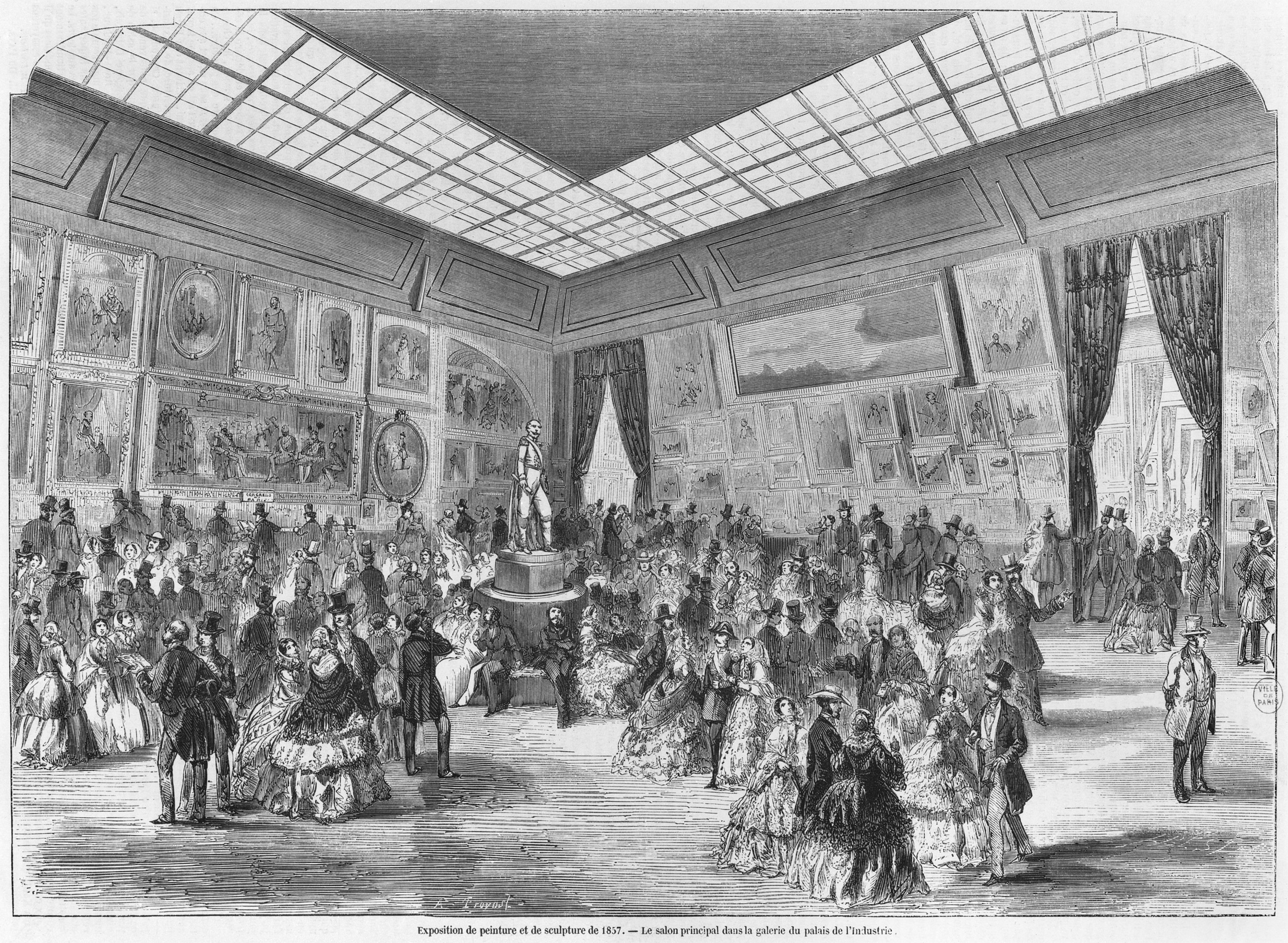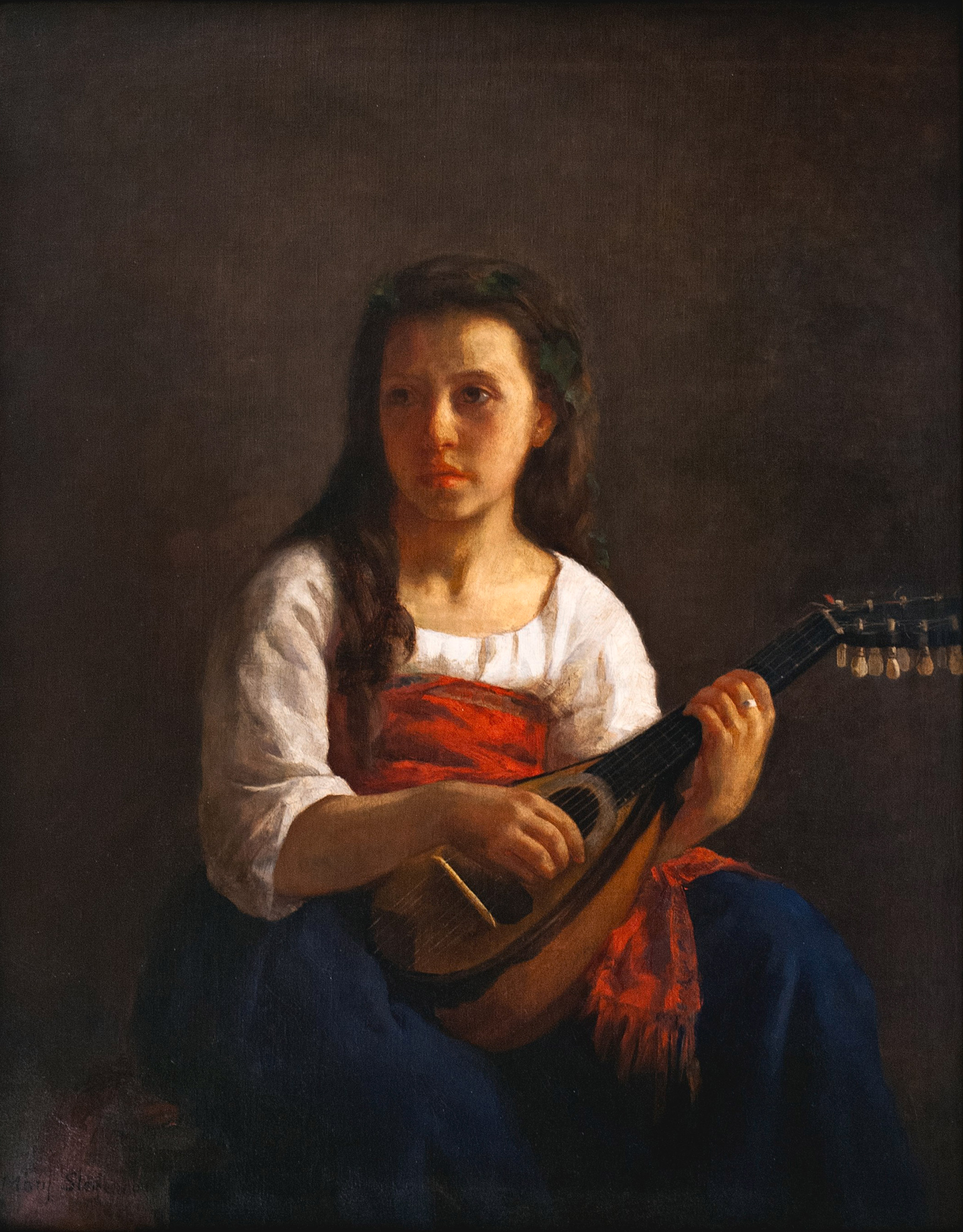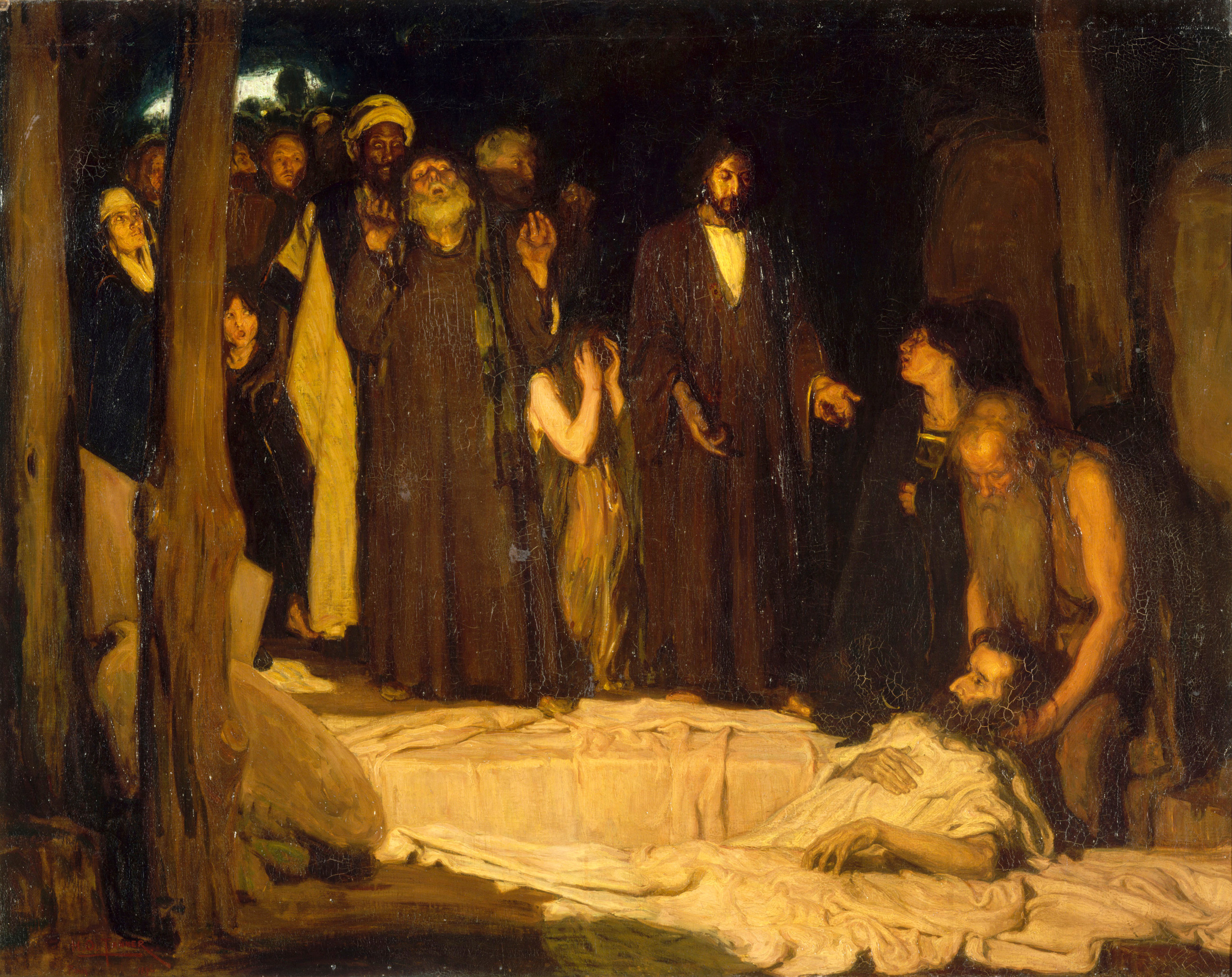
© Musee de la Ville de Paris, Musee Carnavalet, Paris, France/ Bridgeman Images

Mary Cassatt, The Mandolin Player, 1868. Oil paint on canvas; 36-1/2 x 28-3/4 in. Private collection.

John Singer Sargent (American, 1856–1925), Portrait of Frances Sherborne Ridley Watts, 1877. Oil paint on canvas. Philadelphia Museum of Art: Gift of Mr. and Mrs. Wharton Sinkler, 1962, 1962-193-1. Image courtesy of the Philadelphia Museum of Art

Henry Ossawa Tanner, The Resurrection of Lazarus, 1896. Oil paint on canvas; 37-1/4 x 47-1/2 in. Musée d'Orsay: acquis en 1897. Photo: Herve Lewandoswki. © RMN-Grand Palais/Art Resource, NY.
Whistler to Cassatt: American Painters in France (on view through March 13, 2022) chronicles American artists heeding the call to study and work in Paris with the hopes of ultimately being juried into the French Salon.
What is the Salon?
The Grand Salon was France’s official annual art exhibition held in Paris at the Palais de l’Industrie. Also known as the “Exhibition of the Works of Living Artists,” the Salon began in the present day Louvre—at that time a royal Palace—in 1667. The event became annual in 1737 when it was referred to as “The Salon” or “The Paris Salon.” With thousands of visitors taking in over 5,000 works of art on view, this venue became the premier exhibition in which artists strove to present their works. An artist’s career could launch or fail if the jury would accept or reject their submitted work.
Why is there a Salon gallery in Whistler to Cassatt?
One of the exciting elements of Whistler to Cassatt is the exhibition design. We collaborated closely with Denver-based Ramble Creative to craft environments that nurture understanding of the art by guiding visitors along a similar path followed by American artists in France over 100 years ago. Each space reinforces their artistic journey: arriving jubilantly in Paris, learning in the studios, participating in the Grand Salon, retreating to the French countryside, enjoying an innovative one-person exhibition of the works of Mary Cassatt, and finally experiencing works responding to French influences in their group exhibits in the United States, some of which demonstrated their overture towards modernism.
Given the importance that nineteenth-century American artists and their clients ascribed to the Grand Salon, we wanted to create the same experience in our Denver Art Museum presentation. Consequently, we installed works in a cluster overtaking the walls. This “Salon hang,” or a group of paintings hung on multiple levels, mimics the experience one would have had while visiting the Salon in Paris. There are two Salon hangs in Whistler to Cassatt, one taking you back to Paris and the other an evocation of a “group show” back in the US after the artists returned.
Three artists to look for in the Whistler to Cassatt Salon:
Mary Cassatt
In 1868, Mary Cassatt was included in the Salon with The Mandolin Player. Since the jury rejected her submission the year before, Cassatt entered this work using the pseudonym “Mary Stevenson," the surname of her mother, and signed it as such in the lower left corner of the painting.
John Singer Sargent
John Singer Sargent’s Portrait of Frances Sherborne Ridley Watts was his first work juried into the Salon in 1877. The sitter was a childhood friend of Sargent.
Henry Ossawa Tanner
In 1897, Henry Ossawa Tanner received the high honor of a third class gold medal for his masterpiece The Resurrection of Lazarus. The French State purchased this painting, where it later became part of the collection of the Musee d’Orsay.
What is the Livret?
Visitors to the nineteenth-century Paris Salon received a livret, or explanatory booklet or catalog, as a guide for their visit. Each artwork on view was hung alphabetically by last name and given a number. For each numbered artwork, the visitor could find the artist’s name and the artwork’s title, separated by paintings and sculptures. For the DAM’s Whistler to Cassatt, each visitor receives a livret (download the PDF) upon entering the exhibition to assist in identifying artworks in the two salon hangs. Explore scans of historic livrets.

